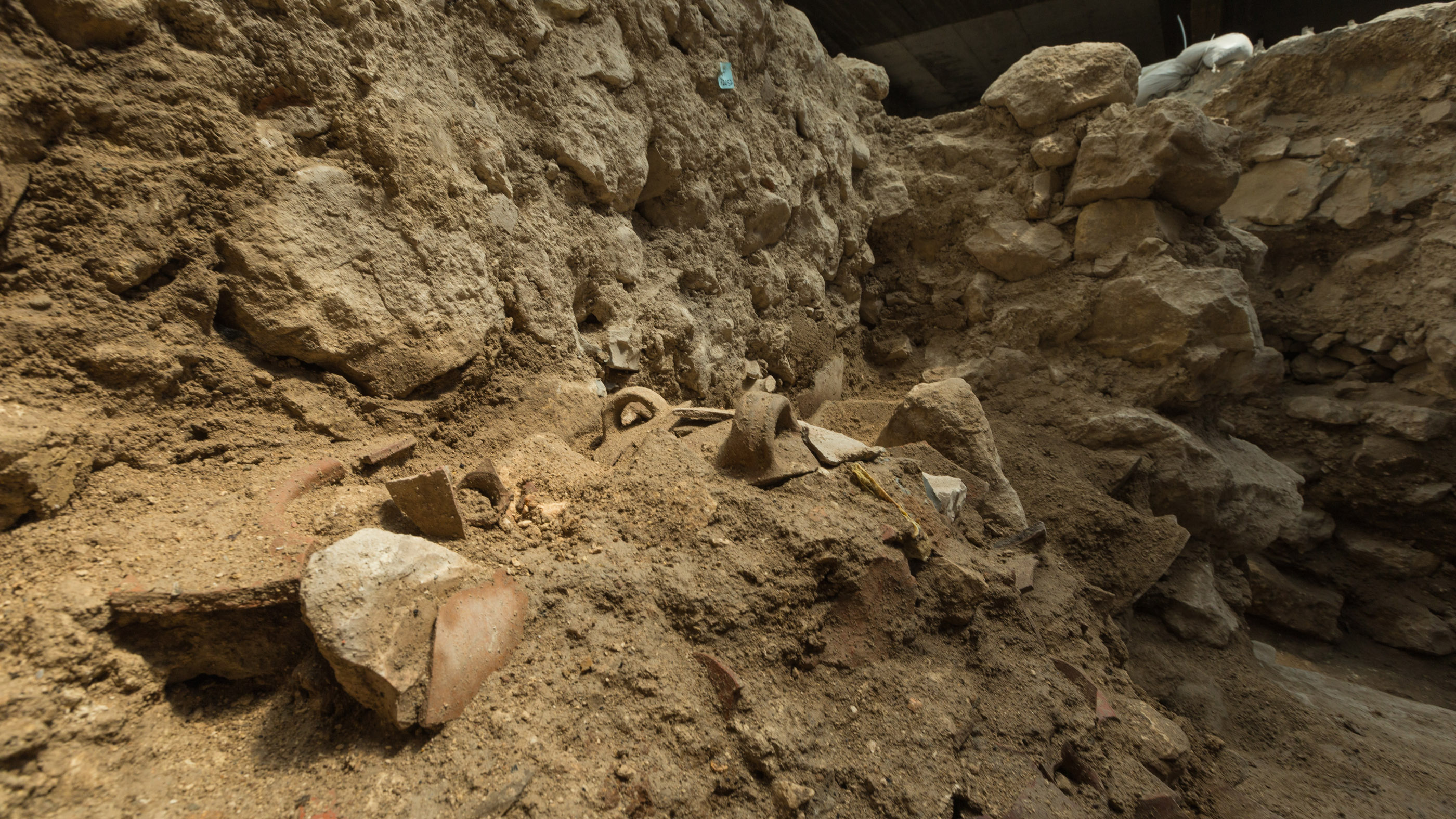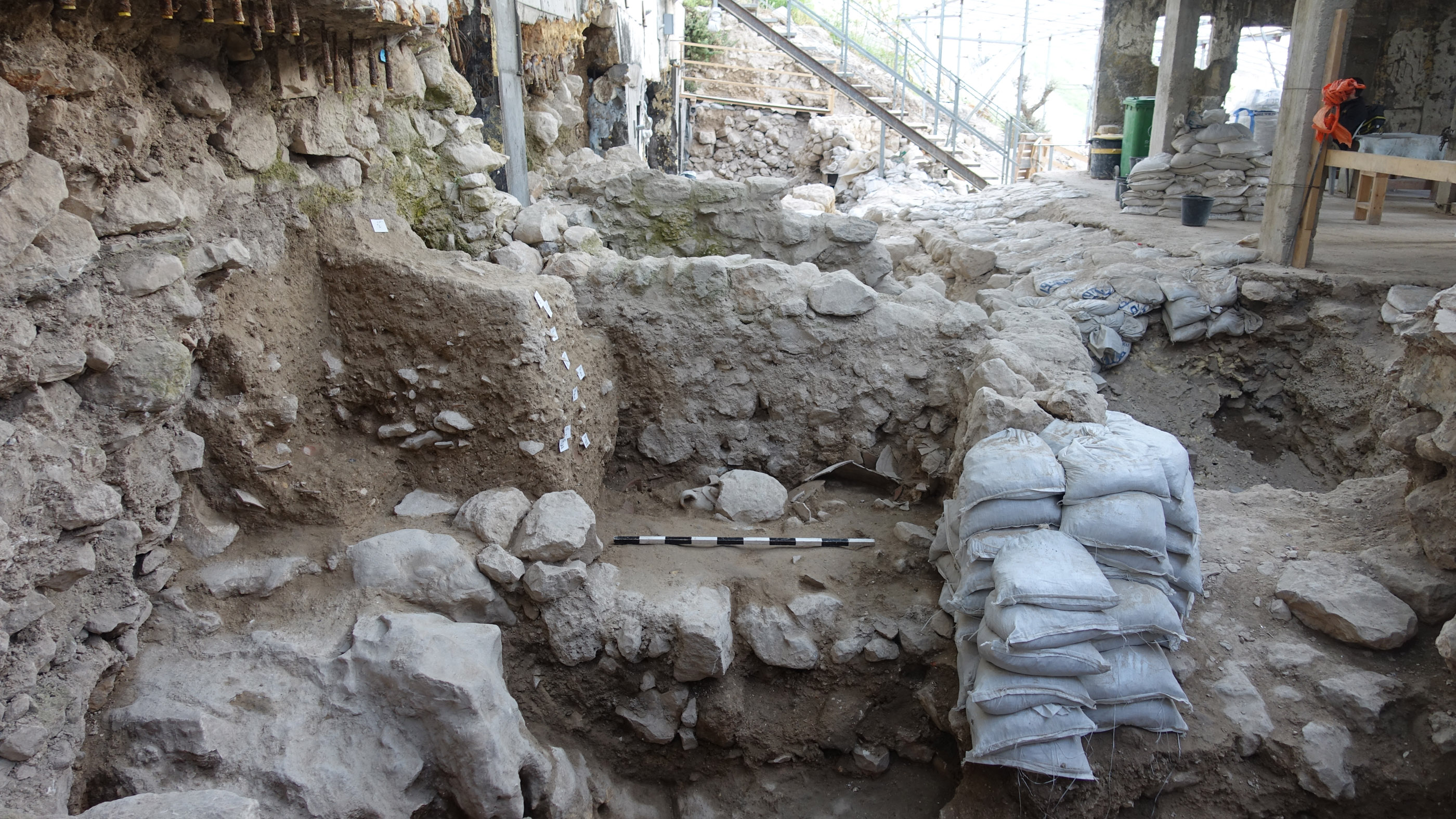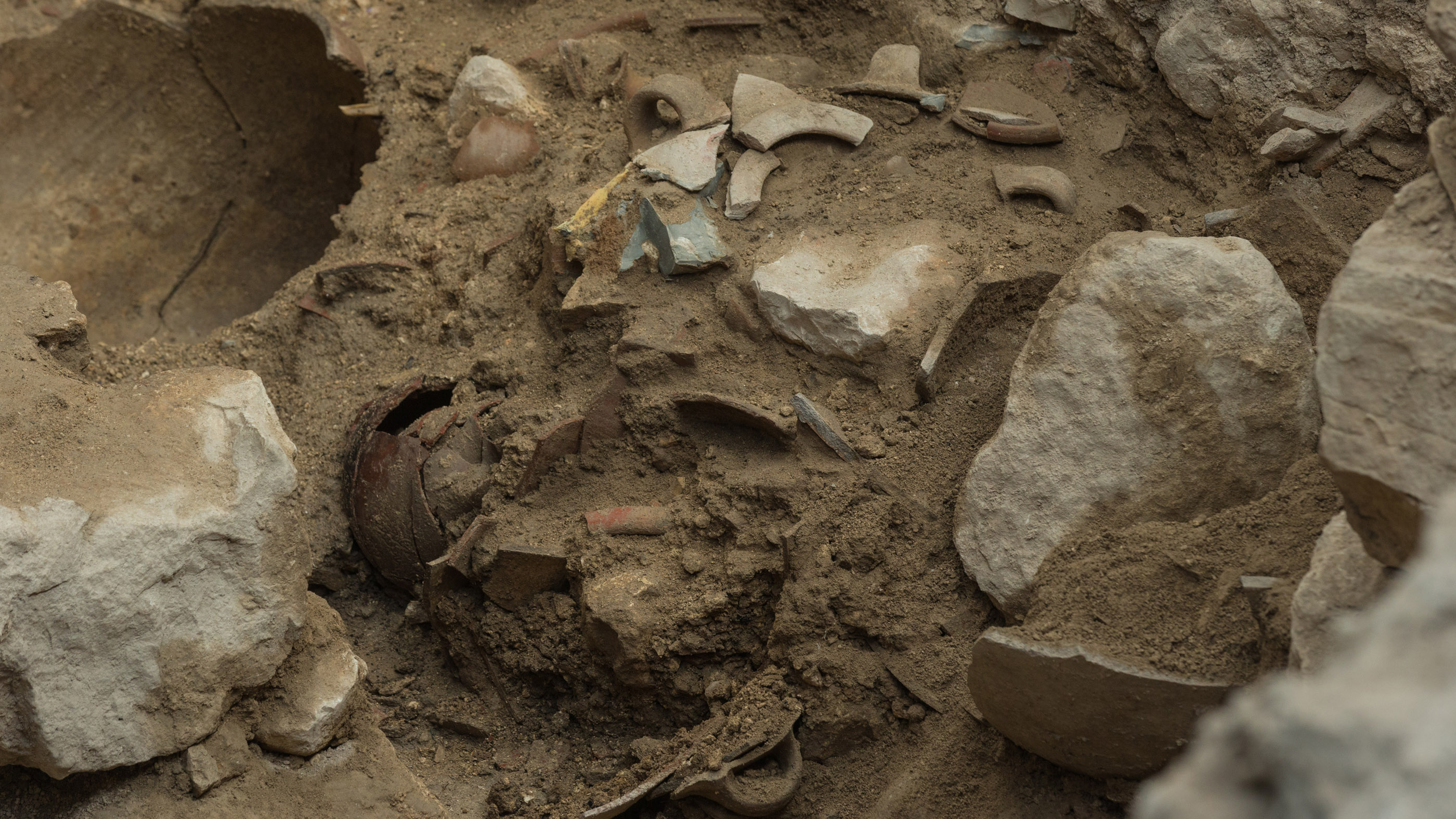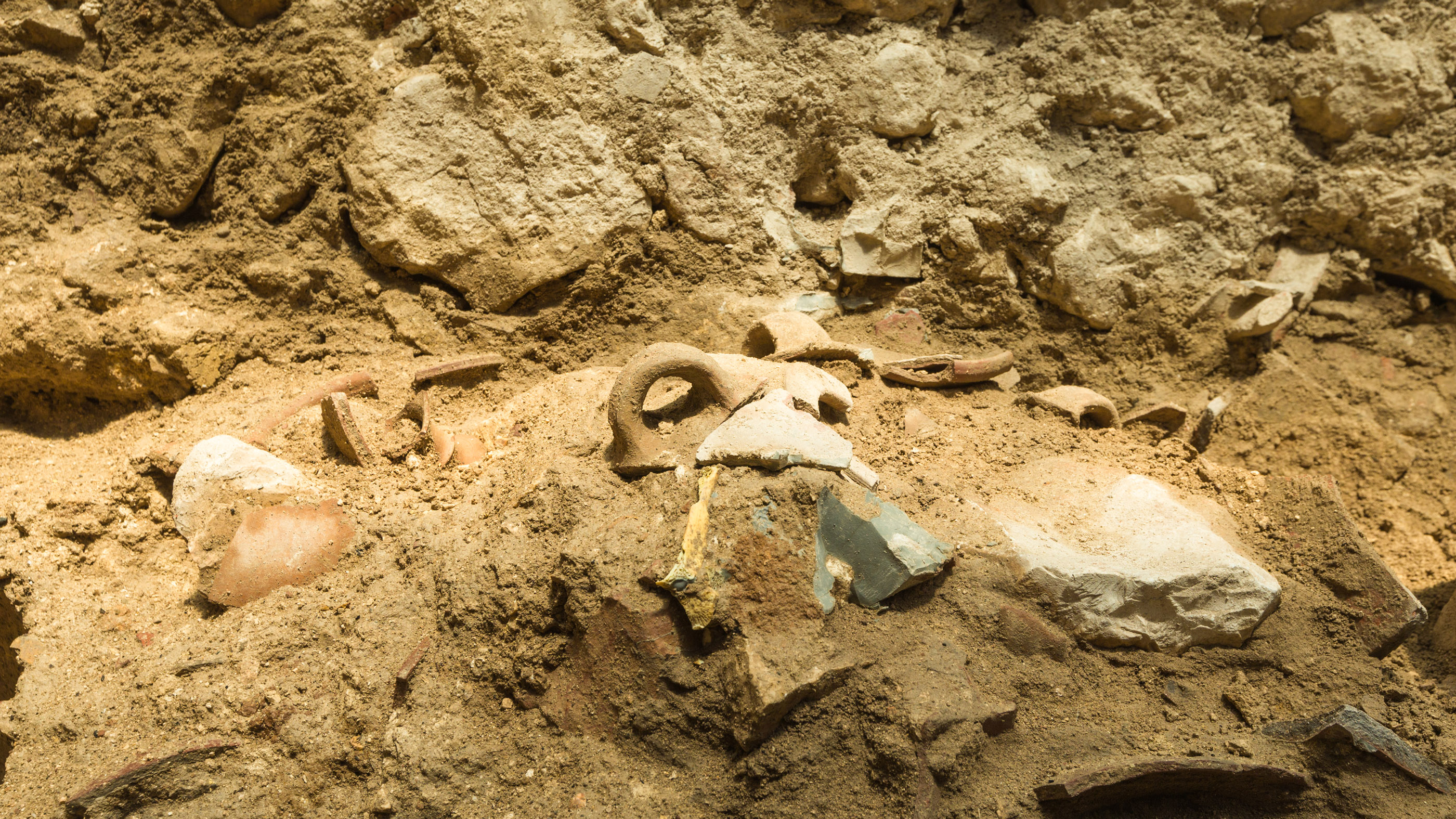Possible evidence for biblical earthquake found in City of David
The 2,800-year-old temblor is described in the Hebrew Bible.

Archaeologists have found evidence of an earthquake that hit the City of David in Jerusalem about 2,800 years ago and that could be a major event described in the Hebrew Bible.
During their excavations, the archaeological team, from the Israel Antiquities Authority, discovered a layer of destruction dating to that time in the City of David National Park. Inside the layer was "a row of shattered vessels, including bowls, lamps, cooking utensils, storage and storage jars, which were smashed as [a] building's walls collapsed," the archaeological team said in a statement from the IAA. Archaeologists also found no signs of a fire, and they are doubtful that the city was attacked by an invading force.
Other sites in the region had similar destruction around 2,800 years ago, the researchers found, adding that the signs of destruction from several sites in the southern Levant could be evidence for a biblical earthquake. The books of Amos and Zechariah both mention an earthquake that happened around this time, when Jerusalem was the capital of the kingdom of Judah and was ruled by a king called Uzziah. "You will flee as you fled from the earthquake in the days of Uzziah king of Judah," Zechariah 14:5 reads.
Related: 10 fascinating biblical-era discoveries




"It seems likely that although Jerusalem was not the epicenter [of the earthquake], it was significantly affected," Joe Uziel, an archaeologist with the Israel Antiquities Authority who is one of the team leaders, told Live Science. The observation that Jerusalem was likely not the epicenter of the earthquake is based on the damage found in Jerusalem and other sites in the region.
Excavations reveal that after the destruction, people rebuilt the destroyed buildings and walls, Uziel said. The fact that the earthquake is mentioned in the bible is "a sign that [the earthquake] was likely quite traumatic," Uziel said.
Did it really happen?
Scholars not involved with the team's research were cautiously supportive of the team's conclusions. "The interpretation of the archaeologists sounds possible," said Israel Finkelstein, a professor emeritus of archaeology at Tel Aviv University in Israel. The team's study, including the interpretation of the pottery, has not been published in a peer-reviewed journal, Finkelstein cautioned; the team used that pottery to help date the earthquake. Finkelstein also said that the area in Jerusalem that was excavated needs to be studied by seismologists to firm up the case for a past earthquake.
Sign up for the Live Science daily newsletter now
Get the world’s most fascinating discoveries delivered straight to your inbox.
Finkelstein noted that evidence for a large eighth-century B.C. earthquake can also be found at other sites in the region, including at Megiddo — a spot investigated by Finkelstein. About 15 years ago, a team of seismologists and archaeologists documented evidence for the earthquake at Megiddo, which "included tilted and fractured walls," said Finkelstein.
"I haven't seen the excavations, but it was quite expected that some damage triggered by the mid-eighth century [B.C.] earthquake would be found in Jerusalem," said Shmuel Marco, a professor of geophysics at Tel Aviv University who took part in the Megiddo earthquake study 15 years ago. "We found it in the ruins of the same age at Megiddo, and others reported it in other excavations and in the deep Dead Sea drilling." which suggests that the earthquake impacted a wide area.
The Jerusalem team's "interpretation seems reasonable to me," said Jason Radine, who is chair of the Department of Global Religions at Moravian University in Bethlehem, Pennsylvania. He noted that the Hebrew Bible mentions that Jerusalem was attacked around the 790s or 780s B.C. by Israel (which at the time was a separate kingdom from Judah). However, "such an attack might leave a burn layer, which the excavators point out is not present in their find,"suggesting that an earthquake is the more likely cause of the destruction, Radine said.
Thomas Levy, who is a distinguished professor of Archaeology at the University of California, San Diego, also thought the damage was likely caused by an earthquake and that a strong case can be made that this earthquake is the same one mentioned in the bible. "When the biblical data is coupled with the archaeological and paleo-seismic data from the southern Levant, a strong correlation is clearly seen between the Book of Amos, a prophet in the Hebrew Bible, and the archaeological record," Levy told Live Science.
The team's research will be presented in September at the "City of David Research" conference.
Originally published on Live Science.

Owen Jarus is a regular contributor to Live Science who writes about archaeology and humans' past. He has also written for The Independent (UK), The Canadian Press (CP) and The Associated Press (AP), among others. Owen has a bachelor of arts degree from the University of Toronto and a journalism degree from Ryerson University.










